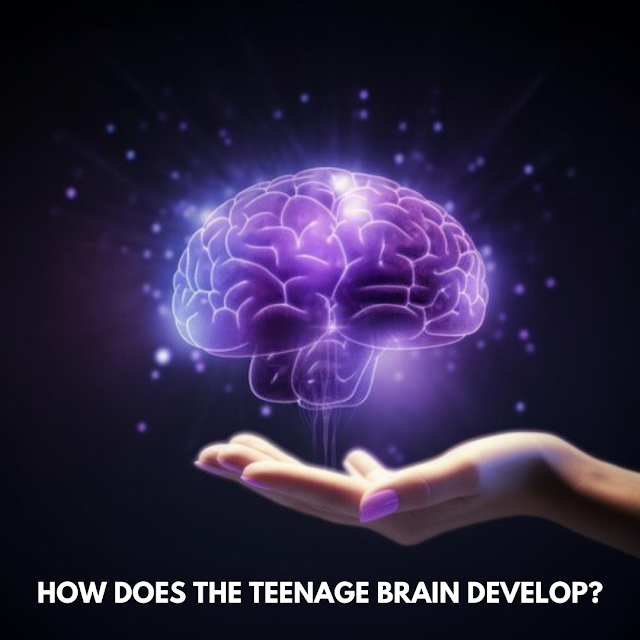Introduction: How does the teenage brain develop? Adolescence is an intriguing phase of life marked by profound physical, emotional, and psychological changes. The brain, in particular, undergoes a remarkable transformation during these years. In this article, we will delve into the intricacies of teenage brain development, shedding light on the intricate processes that shape it. We'll also provide valuable insights and information from the National Institute of Mental Health (NIMH) to support our discussion.
Step 1: How does the teenage brain develop?
1. Neuroplasticity: The teenage brain is highly adaptable, showcasing remarkable neuroplasticity. This quality allows the brain to rewire itself in response to learning and experiences, making it a period when the brain is most open to change.
2. Pruning: During adolescence, the brain undergoes a process known as synaptic pruning. This process involves eliminating weak or unnecessary synaptic connections, making the remaining ones stronger and more efficient. Consequently, cognitive functions are refined, making learning and decision-making more effective.
3. Frontal Cortex Development: The frontal cortex, responsible for essential functions like decision-making, reasoning, and impulse control, continues to develop throughout adolescence. This extended development explains why teenagers often exhibit impulsivity and heightened emotional reactions, as this region is one of the last to mature.
4. Myelination: Myelination, the process of insulating nerve fibers with myelin, continues during the teenage years. This crucial process enhances the efficiency of neural transmission, contributing to the improvement of motor skills and cognitive functions.
5. Emotional Center Development: The amygdala, a brain region responsible for processing emotions, experiences rapid development during adolescence. This development can lead to heightened emotional responses, which in turn contribute to the emotional ups and downs often associated with the teenage years.
6. Hormonal Influences: Hormonal changes during adolescence can significantly affect brain development. Hormones like estrogen and testosterone play a substantial role in the development of gender-specific brain structures, influencing not only physical but also emotional changes during this period.
7. Risk-Taking Behavior: Teenagers are more prone to risk-taking behavior due to the imbalance between their developing impulse control in the frontal cortex and the emotional reactivity of the amygdala. This dynamic creates a desire for new experiences and challenges.
For more in-depth information on these aspects of teenage brain development, you can refer to the National Institute of Mental Health's article here.
Conclusion:
The teenage brain is a marvel of nature, constantly evolving to meet the challenges of a changing world. The processes of neuroplasticity, synaptic pruning, frontal cortex development, and myelination are just a few of the intricate steps involved in this development. Understanding these processes helps us appreciate the unique journey of adolescence and provides insights into the complexities of teenage behavior.
As teenagers navigate the transformative period of adolescence, it's crucial for parents, educators, and caregivers to be aware of ongoing brain development. By providing the right guidance and support, we can help adolescents harness the incredible potential of their developing brains and make a smooth transition into adulthood.
Frequently Asked Questions (FAQs)
1. What is the typical age range for adolescence?
- Adolescence typically spans from ages 10 to 19, though there may be slight variations from person to person. It is generally divided into early (10-14), middle (15-17), and late (18-19) adolescence.
2. Why is the teenage brain so susceptible to risk-taking behavior?
- The teenage brain's susceptibility to risk-taking behavior can be attributed to the imbalance between the developing impulse control in the frontal cortex and the heightened emotional reactivity of the amygdala. This imbalance encourages teenagers to seek new experiences and challenges.
3. How does neuroplasticity benefit the teenage brain?
- Neuroplasticity allows the teenage brain to adapt, learn, and develop new skills in response to learning and experiences. It makes adolescence a period of rapid cognitive growth and adaptation.
4. Can hormonal changes during adolescence impact brain development?
- Yes, hormonal changes significantly influence brain development during adolescence. Hormones like estrogen and testosterone affect the development of gender-specific brain structures, contributing to physical and emotional changes.
5. Is the teenage brain fully developed by the age of 19?
- No, the teenage brain is not fully developed by the age of 19. The frontal cortex, responsible for decision-making and impulse control, continues to develop into the early 20s. Brain development is an ongoing process that extends beyond the teenage years, shaping an individual's path into adulthood.





0 Comments